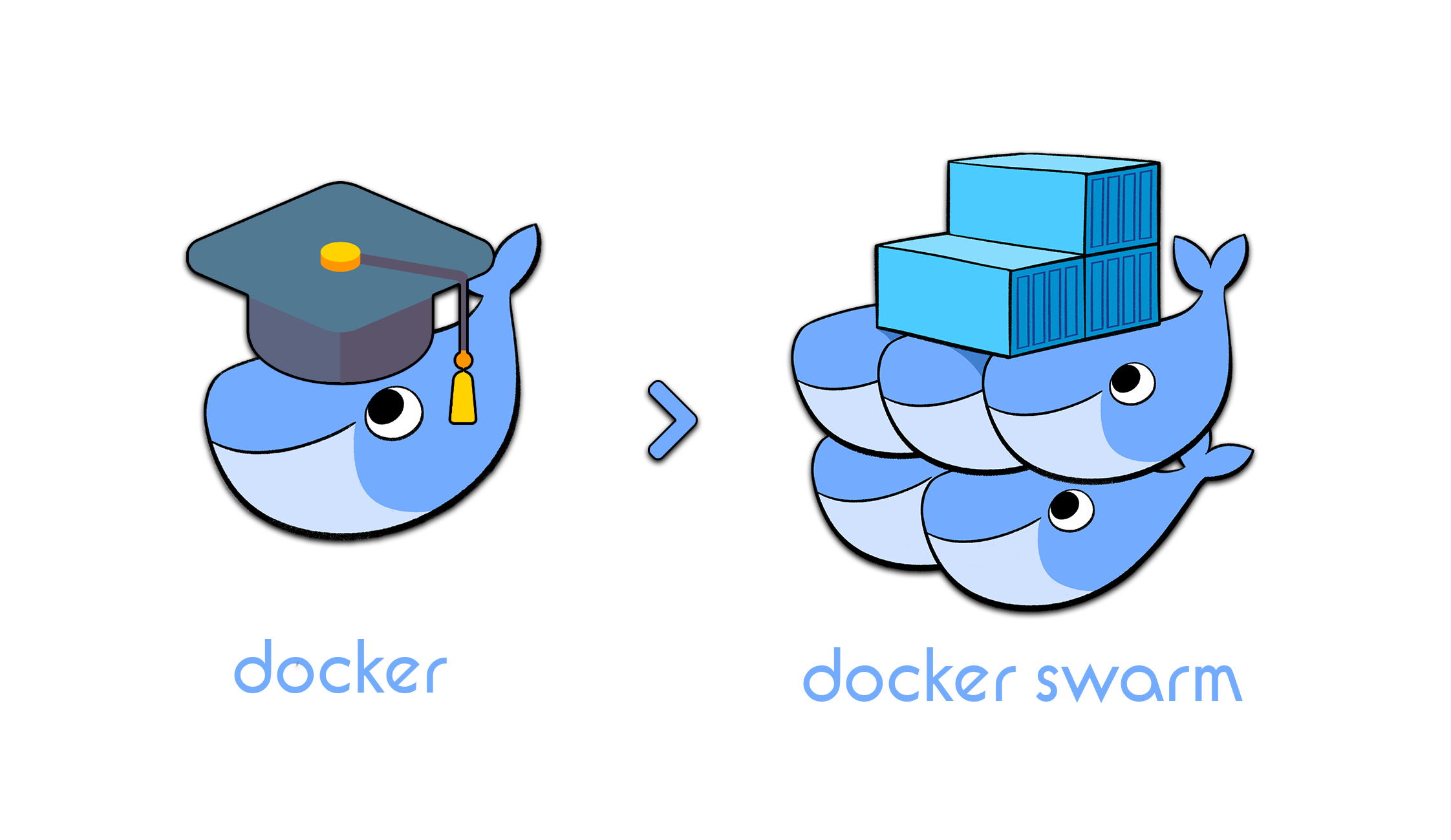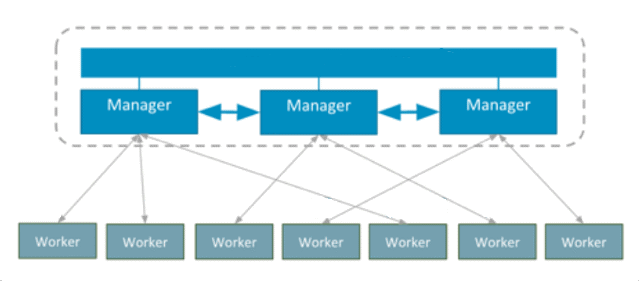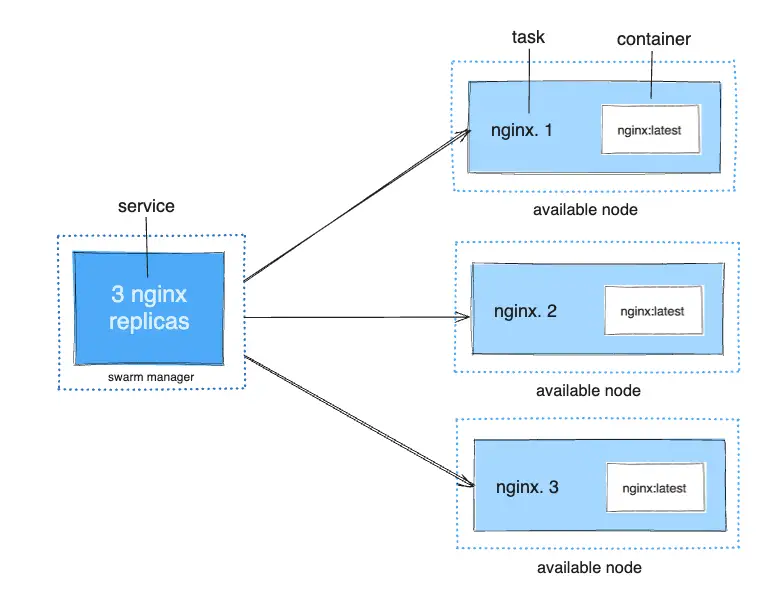Docker Swarm: The Simplest Container Orchestrator
Docker Swarm is a native clustering and orchestration tool for Docker containers.

Introduction
Docker Swarm is a native clustering and orchestration tool for Docker containers. It allows developers and IT administrators to create and manage a cluster of Docker nodes as a single virtual system. This capability is essential for deploying, managing, and scaling containerized applications in production environments. Docker Swarm was introduced by Docker Inc. to provide a simple yet powerful way to orchestrate containers, offering an alternative to more complex orchestration solutions like Kubernetes.
The significance of Docker Swarm in container orchestration lies in its seamless integration with the Docker ecosystem, its simplicity, and its ability to efficiently manage resources. As organizations increasingly adopt containerization for their applications, the need for effective orchestration tools becomes paramount. Docker Swarm fulfills this need by offering a robust and easy-to-use platform for managing containerized applications at scale.
Core Concepts
To understand Docker Swarm, it's essential to grasp its core concepts. At its heart, Docker Swarm operates in "Swarm Mode," which is activated by initializing a swarm cluster. This mode transforms Docker nodes into a coordinated cluster capable of running services and balancing workloads.

Node
Nodes in a Docker Swarm are categorized into two types: Manager nodes and Worker nodes. Manager nodes are responsible for the overall management of the swarm, including maintaining the cluster state, scheduling tasks, and managing membership and orchestration. Worker nodes, on the other hand, execute the tasks assigned to them by the managers. This division of labor ensures that the cluster operates efficiently and scales effectively.

Services
Services in Docker Swarm define the desired state of the application, including the number of replicas and the network configurations. Each service consists of multiple tasks, which are individual instances of the Docker container running the application. The swarm manager is responsible for distributing these tasks across the available nodes, ensuring that the desired state is maintained even in the face of node failures or changes in demand.

Networking

Networking within a Docker Swarm is facilitated by overlay networks, which enable communication between containers across different nodes. This network abstraction allows services to discover and communicate with each other seamlessly, regardless of their physical location within the cluster. Additionally, Docker Swarm provides built-in load balancing, distributing incoming requests across the various service replicas to ensure optimal performance and resource utilization.
Architecture
The architecture of Docker Swarm is designed to provide a robust and scalable platform for container orchestration. The process begins with the formation of a swarm cluster. This involves initializing a Docker node as a manager and joining additional nodes as either managers or workers. The manager nodes form a quorum, which is essential for maintaining the cluster state and making decisions.
In a Docker Swarm cluster, the manager nodes play a crucial role in ensuring data consistency and fault tolerance. They use the Raft consensus algorithm to replicate the cluster state across all managers, ensuring that changes are consistently applied even in the presence of node failures. This high availability model allows the swarm to continue operating smoothly even if some manager nodes go offline.
![The Docker Swarm architecture - Learn Docker - Fundamentals of Docker 19.x - Second Edition [Book]](https://www.oreilly.com/api/v2/epubs/9781838827472/files/assets/185aff48-e453-4420-a5c7-35859f604904.png)
Service scheduling in Docker Swarm involves the placement of tasks across the worker nodes based on various strategies, such as spread, binpack, and random. These strategies help optimize resource utilization and ensure that the workload is evenly distributed. Docker Swarm also supports constraints and affinities, allowing users to specify where tasks should or should not run, based on node attributes.
Security is a critical aspect of Docker Swarm's architecture. The platform includes several built-in security features, such as mutual TLS for node communication, role-based access control, and encrypted network traffic. These features help protect the integrity and confidentiality of the cluster, ensuring that only authorized nodes and users can interact with the swarm.
Benefits of Docker Swarm
One of the primary benefits of Docker Swarm is its simplicity and ease of use. Unlike some other orchestration tools, Docker Swarm is designed to be straightforward and intuitive, making it accessible to developers and IT administrators with varying levels of expertise. The tight integration with Docker also means that users can leverage their existing Docker knowledge and tools without needing to learn a new platform from scratch.
Docker Swarm is also known for its efficient resource utilization. By distributing tasks across the available nodes and balancing the workload, Docker Swarm ensures that resources are used optimally, reducing waste and improving performance. This efficiency is particularly valuable in production environments where resource constraints are a common concern.
Security is another significant advantage of Docker Swarm. The platform's built-in security features, such as mutual TLS and encrypted networks, provide robust protection against unauthorized access and data breaches. This security model helps organizations maintain compliance with industry standards and best practices, safeguarding their applications and data.
Performance and scalability are key strengths of Docker Swarm. The platform can handle large-scale deployments with ease, allowing organizations to scale their applications horizontally by adding more nodes to the swarm. The built-in load balancing and service discovery mechanisms ensure that the system remains responsive and performant even under heavy load.
Comparison with Kubernetes

Kubernetes is another popular container orchestration tool that often comes up in discussions alongside Docker Swarm. While both tools aim to solve similar problems, they have different approaches and feature sets that make them suitable for different use cases.
Kubernetes is known for its comprehensive feature set and flexibility. It provides a rich set of APIs and tools for managing complex applications, including advanced scheduling, self-healing capabilities, and extensive networking options. However, this complexity can also make Kubernetes more challenging to set up and manage, particularly for users who are new to container orchestration.
In contrast, Docker Swarm is designed to be simpler and more straightforward. Its tight integration with Docker and user-friendly interface make it an attractive option for small to medium-sized deployments and for users who prioritize ease of use over advanced features. While Docker Swarm may not offer the same level of flexibility and customization as Kubernetes, it provides a more accessible entry point for organizations looking to adopt container orchestration.
The community and ecosystem support for Kubernetes is also more extensive than for Docker Swarm. Kubernetes has a larger user base, more third-party integrations, and a broader range of community-contributed tools and extensions. This ecosystem can be a significant advantage for organizations that require a wide array of functionalities and integrations.
| Criteria | Docker Swarm | Kubernetes |
|---|---|---|
| Ease of Use | Simple setup and management, ideal for beginners | More complex setup, requires steeper learning curve |
| Integration with Docker | Tightly integrated with Docker, seamless experience | Integration with Docker via Kubernetes tools |
| Feature Set | Basic orchestration features, suitable for most applications | Comprehensive features, supports advanced use cases |
| Scalability | Efficient resource utilization, suitable for medium-scale deployments | Highly scalable, suitable for large-scale, complex deployments |
| Community and Ecosystem | Smaller community, fewer third-party integrations | Larger community, extensive third-party integrations and support |
| Security | Built-in security features, including mutual TLS | Robust security features, extensive policies and controls |
| Deployment Speed | Faster to deploy due to simplicity | Deployment can be slower due to complexity |
| Customization | Less flexible, fewer customization options | Highly customizable, supports a wide range of configurations |
| Best Use Cases | Small to medium-sized applications, development environments | Large-scale applications, production environments with complex requirements |
Best Use Cases
Docker Swarm is best suited for small to medium-sized deployments, where its simplicity and ease of use can be fully leveraged. It is an excellent choice for development and testing environments, where quick setup and straightforward management are priorities. Docker Swarm is also well-suited for applications that do not require the advanced features and flexibility of Kubernetes.
For organizations that are already heavily invested in the Docker ecosystem, Docker Swarm provides a seamless extension of their existing workflows and tools. This integration can simplify the transition to container orchestration and reduce the learning curve for teams.
In the upcoming article, we will provide a guide how to setup Docker Swarm on your own cluster. Stay tune!


